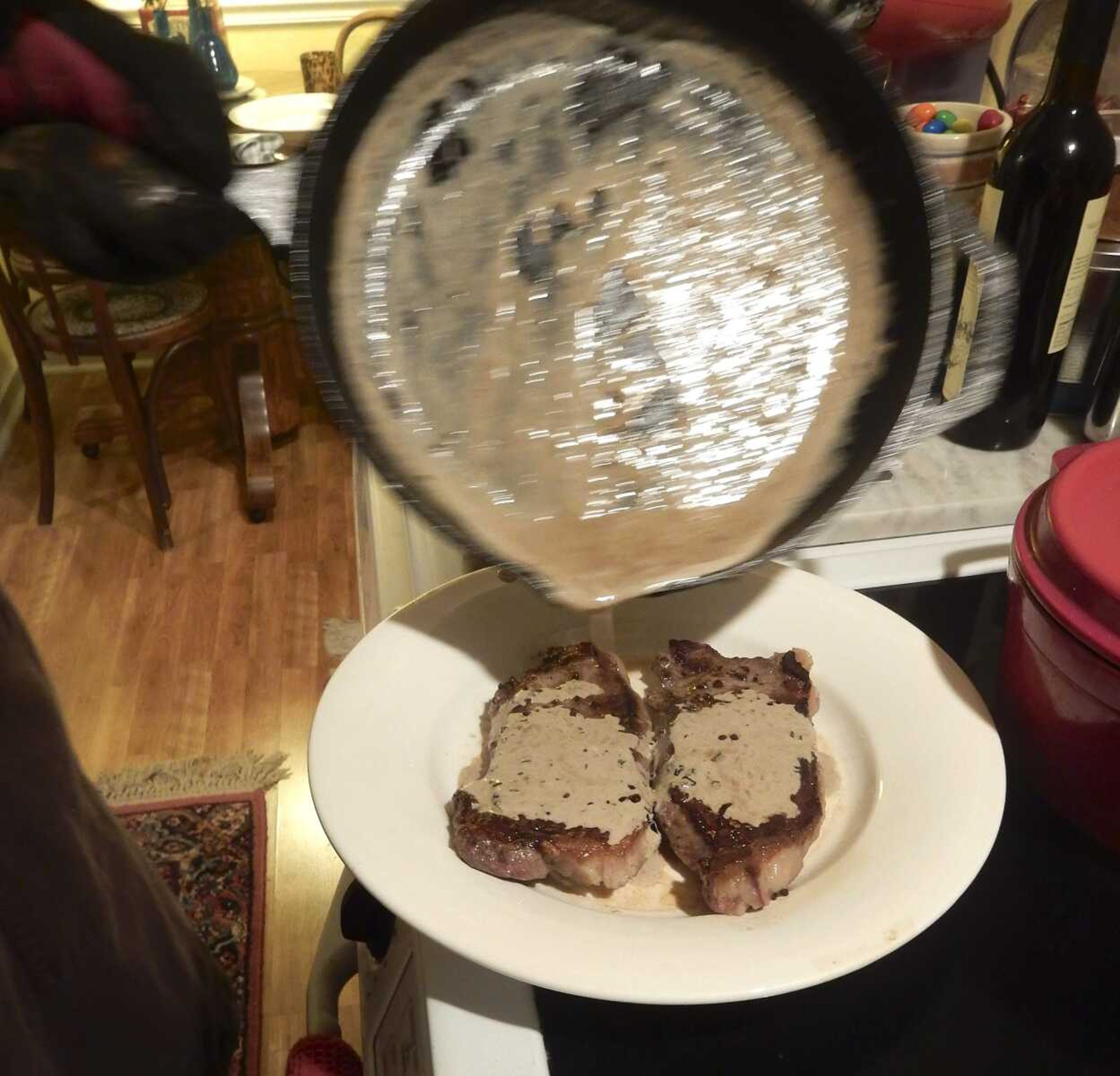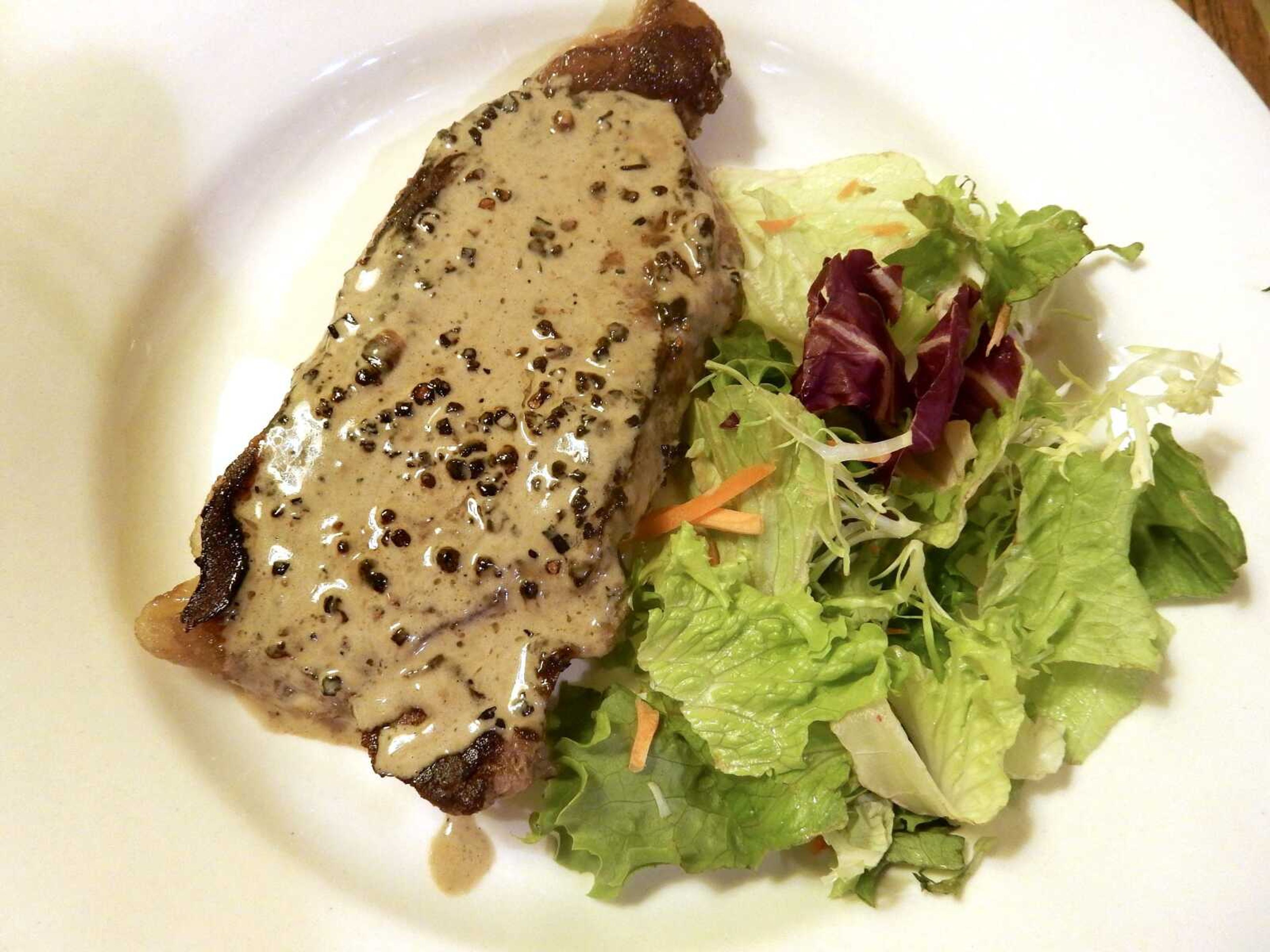Having a steak from a cast-iron skillet
"Don't throw the past away. You might need it some rainy day. Dreams can come true again, when everything old is new again." So go the lyrics to one of the late Peter Allen's songs, which he once performed on the stage of the Radio City Music Hall, joining the Rockettes' kickline in the process, the first man ever to do so...
"Don't throw the past away. You might need it some rainy day. Dreams can come true again, when everything old is new again." So go the lyrics to one of the late Peter Allen's songs, which he once performed on the stage of the Radio City Music Hall, joining the Rockettes' kickline in the process, the first man ever to do so.
Allen's characteristic flamboyance shouldn't obscure the fundamental truth of his lyrics. Sooner or later, it seems, what was dated is suddenly current, whether the flip phone, mid-century modern furniture, or the plot of every Hallmark Channel movie.
In the culinary world there is no better example of the principle than the cast-iron skillet, an implement with ancient roots that has made a comeback in contemporary kitchens. Thus, the Lodge company, the only major U.S. manufacturer of cast-iron cookware, is experiencing its best sales since it was founded in 1896.
Cooking with cast iron, however, goes back much further than that. The Chinese invented the process of making cast-iron cookware around 500 B.C. The invention took a while to reach Europe, but even so it was being used in England as early 1100 A.D. In the early 18th century Abraham Darby, an Englishman, revolutionized the process of making cast-iron cookware and thanks to him cast-iron pots and pans, whether skillet, Dutch oven, griddle, or waffle iron, became dominant in the 18th and 19th centuries. Adam Smith in "The Wealth of Nations" claimed the implements were even more valuable than gold.
Well into the 20th century, cast-iron skillets remained popular as a consequence of the invention of the flat version made for use on cooking stoves (commonly made of cast iron themselves) as opposed to three-legged cast-iron skillets made to stand upright over a campfire or in a fireplace.

By the 1960s and '70s, however, with the emergence of Teflon-coated aluminum and stainless steel cookware, the popularity of cast-iron pots and pans declined. As someone who did not own a piece of cast-iron cookware until I was given one last Christmas but who shamelessly has his All-Clad on display, I can well understand the seductive properties of the modern stuff.
But like many cooks, I've recently discovered, or rediscovered, the virtues of cast iron. And it's not just because I don't really care much for Teflon. (A well seasoned cast-iron skillet is pretty much nonstick anyway.) No, it's because though ironically not a good heat conductor, cast iron can withstand and retain very high temperatures, making it ideal for producing seared meat, crispy chicken skin, and crusty cornbread. It can even perform its magic on pizza, chocolate chip cookie dough, and mac and cheese.
If you don't already own a cast-iron skillet, I urge you to get one (they're ridiculously inexpensive) and find out why after all these years it's still hot.
Steak au Poivre
Intense heat is the secret to the succulent steaks you get at a steakhouse restaurant. This recipe, adapted from "The Cast-Iron Skillet Cookbook" by Dominique deVito, shows how you can achieve the same effect at home. Just be sure to stand back when you ignite the Cognac.
- 2 boneless 8-ounce strip steaks
- Salt
- 1 tablespoon whole black peppercorns
- 1 teaspoon vegetable oil
- 2 minced shallots
- 2 tablespoons butter
- 1/3 cup Cognac
- 1/2 cup heavy cream
Pat steaks dry and season with salt on both sides. Coarsely crush peppercorns and press evenly into both sides of steaks. Heat a skillet on medium-high until hot. Add oil and coat bottom of pan. Add steaks and sear for three minutes on both sides (for medium-rare).
Remove steaks from pan and transfer to a 200-degree oven. Reduce skillet to medium heat. Add one tablespoon butter to pan. Once melted, add shallots, stirring up any bits from the bottom of the pan and cook for three minutes. Pour Cognac into pan, swirl it around, and ignite. Once flame has subsided, continue to cook, stirring constantly, until almost boiling. Add cream and any juices from the steaks, reduce heat and cook until slightly reduced. Stir in remaining tablespoon of butter and pour over steaks.
Tom Harte's book, "Stirring Words," is available at local bookstores. "A Harte Appetite" airs Tuesdays at 7:42 a.m. and 5:18 pm on KRCU, 90.9 FM. Contact Tom at www.semissourian.com or at the Southeast Missourian, P.O. Box 699, Cape Girardeau, Mo., 63702-0699.
Connect with the Southeast Missourian Newsroom:
For corrections to this story or other insights for the editor, click here. To submit a letter to the editor, click here. To learn about the Southeast Missourian’s AI Policy, click here.










